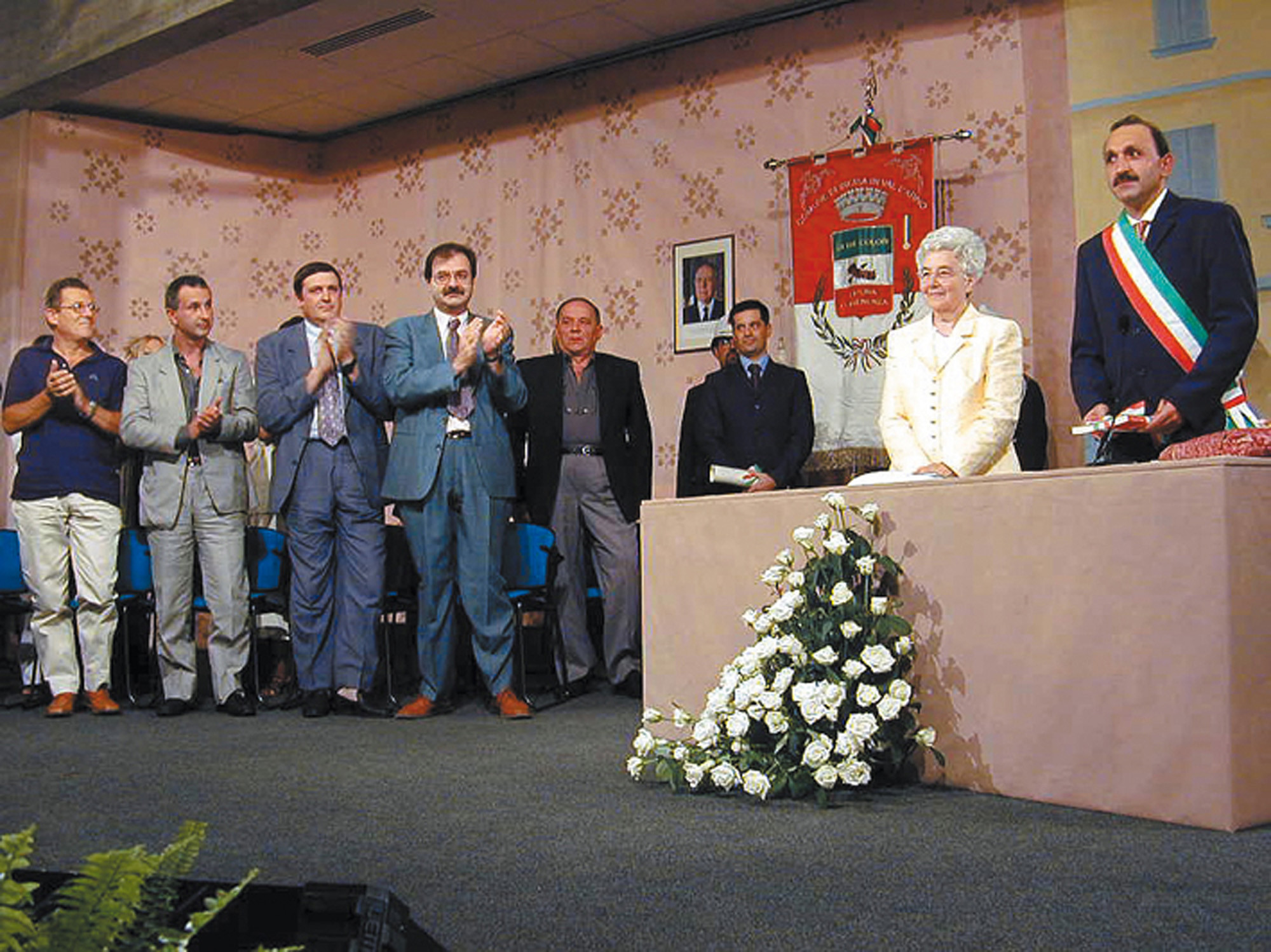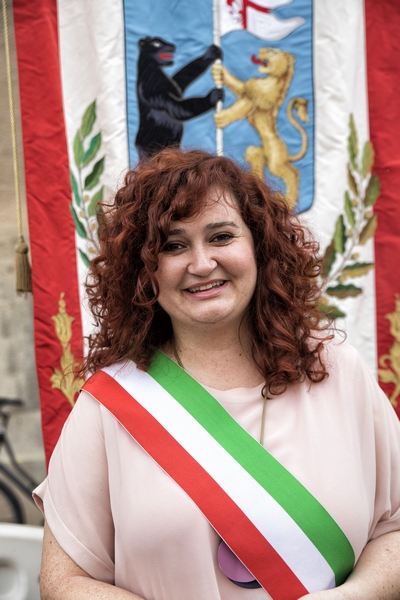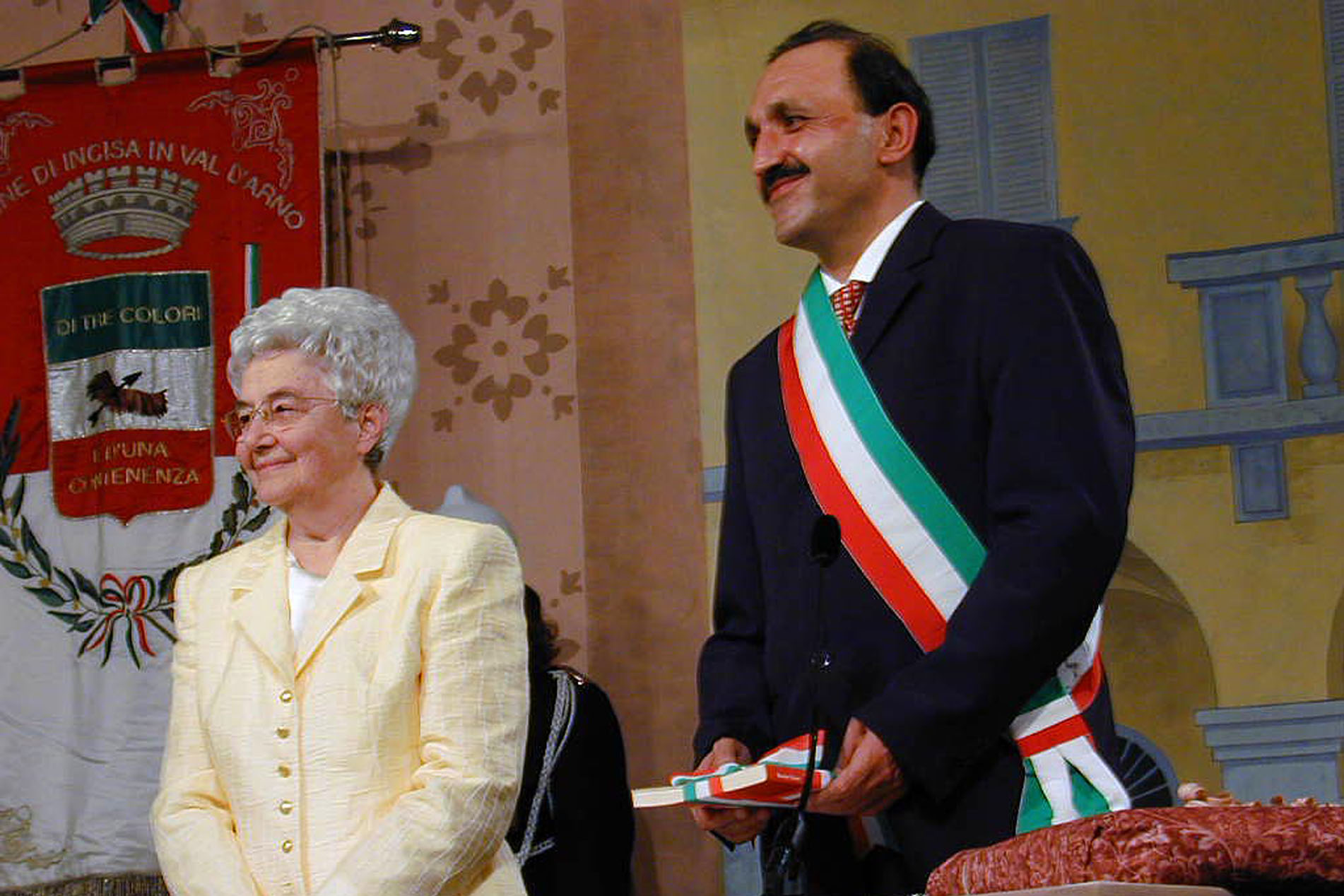On September 14, 2000, the town of Incisa conferred honorary citizenship upon the founder of the Focolare. Currently, Mayor Giulia Mugnai called Loppiano “a strong presence of dialogue, culture, and care for the environment.”
There was genuine interest, but also a hint of legitimate curiosity. Of course, it was the first honorary citizenship conferred by the municipality of Incisa in Val d’Arno. But above all it was about meeting a noted figure. Therefore, not only was the municipal council present, but also the mayors of the Valdarno and Val di Sieve.
On that September 14, 2000 in Saint Benedict Hall, Mayor Emanuele Auzzi was proud and excited to include Chiara Lubich among its citizens. He expressed his esteem for the foundress of the Focolare and spoke of the citadel as “a most important resource for the local region of the commune and for the reality of Valdarno.”
The new citizen of Incisa first recalled the memory of “the first stone of the citadel, Eletto Vincenzo Folonari, the wealthy focolarino who is now in Heaven and had made himself poor for the love of Christ and donated the land on which Loppiano stands.”
Ever since Lubich became an honorary citizen, relations between the local administration and the citadel have grown. This was reported by Giulia Mugnai in her second term as mayor of the new institutional structure of Figline and Incisa together (as she likes to be called), after she had been a city councilor in 2009 – 2013.

What did the citadel signify for the local administration?
“Loppiano has been a living and active part of the surrounding community for many years, with constructive relationships on various fronts. Loppiano conveys a profound sense of its presence, because it sends a message to the city and to the territory.”
What sort of message?
“A strong message, which invites [us] to build bridges and relationships among everyone, thanks to the internationality of its residents and the witness of community life that is an example for anyone. And this contribution is more important than ever in this period in this period when the fear of cultural, ethnic and religious diversity is growing. Loppiano’s message is foundational. And it also says something more.”
That is?
“I’d also like to emphasize the message that is given by the care for the region and the countryside, by the love for the natural environment, which is manifested in the many conservation projects in favor of the land on which the people of Loppiano live.”
In the light of your mayoral experience, what contributions has the citadel made in recent years?
“The creation of the Sophia University Institute marked the creation of a cultural garrison that triggered a stimulating reflection within the university, but also in the surrounding region, for Florence. In the local area – from the project on social well-being of Figline to the reflection in Campi Bisenzio on the civil economy – there has been a significant positive ferment. Sophia is present within this framework and has already brought innovation to the culture of Tuscany, the civil community and public administrations.”
We can see how you appreciate the educational value.
Yes, of course, but never forget its very useful contribution to health care. The citadel immediately began producing face masks Made in Loppiano, right in the moment when we couldn’t find any. And I remember the effort made by the young people of Loppiano and the Sophia students in distributing the masks.”
How do the local people see the citadel today?
“The citizens have a lot of relationships with the people of Loppiano, going way back. Very many families in the region are linked to Loppiano in different ways, and this reciprocity in the relationships promotes a positive and constructive permeability between the citadel and the local region.
I’ve noticed that Loppiano’s care for the environment is appreciated by the people, that whenever they go up to the citadel, they find a well-kept environment, a place to kick back and relax in peace.”
And what are your expectations of the citadel, as Mayor?
“First of all, to increase relationships with Sophia. I’d like to bring it into the middle and high schools, so that they could spread the stimulation behind it and the ideas and objectives of Sophia, to build together a vision for the future with the new generations.”
And then?
“More generally, to make the citadel more accessible, whose green zones, nature trails, and walking paths, along with the meadow beside Saint Benedict Hall are already used by the people of the region. It’s a patrimony that has to be used for the whole local surrounding community. The collaboration between citadel and region has to be strengthened in order to produce a fruitful osmotic relationship.”


